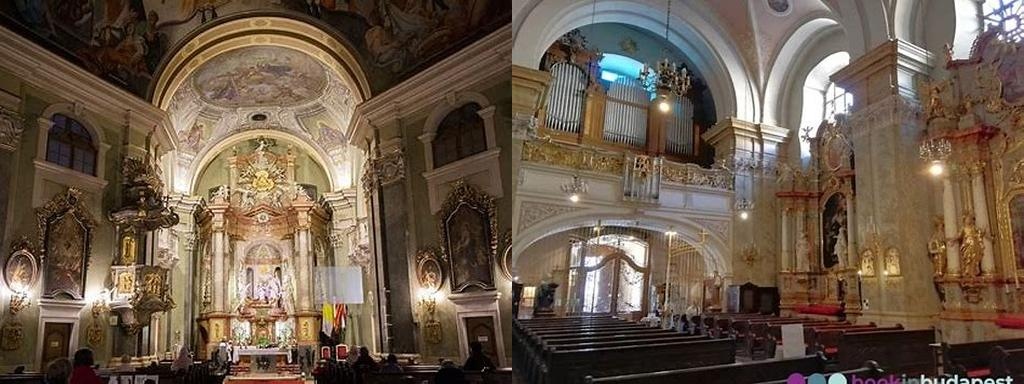
Szent Anna-templom, or St. Anne’s Church, stands quietly yet majestically at the foot of the Buda hills, tucked into the historic Batthyány Square, just steps from the rushing Danube. While Budapest dazzles most visitors with its grand boulevards and opulent palaces, this church rewards those curious enough to peek behind more modest facades. Whether you stumble upon it after a riverside walk or make a deliberate pilgrimage, the reward is the feeling of discovering an authentic corner of centuries-old Budapest, a place where daily life and deep history overlap in the most evocative way.
Construction began on Szent Anna-templom in 1740, designed by master architect Kristóf Hamon, after whom the square outside the church is named. Work was completed in 1761, with funding and encouragement by the Jesuit order, whose influence is still evident throughout the church’s many Baroque flourishes. The facade draws you in first—a real showcase of Central European late Baroque, or Rococo, architecture. The two slender, symmetrical towers frame a collection of whimsical statues. Step closer and delicate details emerge: cherubs, flowing robes carved in stone, and a subtle blend of white and ochre. There’s an almost theatrical quality to it, as if the building itself were pulling back a velvet curtain and inviting you inside.
Push open those heavy wooden doors and you step into an interior that manages to be both opulent and warmly human. The nave is ringed in gilded stuccoes, high ceilings frescoed with clouds and saints, ornate side altars glimmering with candlelight. The main altar is especially show-stopping—supported by twisting Solomonic columns, it is a swirl of pastel colors, gold leaf, and sculpted figures, all dedicated to St. Anne, the church’s namesake and mother of the Virgin Mary. Special mention should go to the pulpit, a masterpiece of woodcarving featuring dynamic, swirling angels that seem poised to leap onto the checkerboard floor below.
One of the more compelling things about Szent Anna-templom, though, isn’t just its beauty—it’s how much life it has witnessed. This area of Batthyány Square has seen the rise and fall of empires, uprisings, floods, wars, and urban renewal, yet the church has quietly anchored the neighborhood. In the late 19th and early 20th centuries, local market traders and craftsmen would step inside to light a candle for luck before opening their stalls. During the bombardments of World War II, the towers suffered significant damage but quick repairs ensured the bells could ring out across the Danube once again.
What really brings St. Anne’s Church into the present are the everyday stories woven through its walls. On weekdays, you might find a few neighbors in quiet contemplation, their presence a calm counterpoint to the bustle outside. Musical evenings, often featuring local choirs and visiting organists, make wonderful use of the church’s superb acoustics. The church’s crypt, sometimes open to the public, holds another dimension of history—ancient tombs and archaeological remnants unearthed during renovations. If you speak with one of the volunteer guides, you might hear tales passed down through generations: secret messages passed between resistance fighters, wedding rituals unique to the Buda side, or neighborly squabbles resolved over a handshake after Mass.
If you’re lucky enough to visit Szent Anna-templom on a market morning or during a hazy evening with the bells tolling faintly above the river, you’ll understand that this is more than just a photo stop. It remains a treasured gathering place—a quietly remarkable blend of art, faith, and local tradition. Despite years and upheavals, St. Anne’s endures as a gentle witness to Budapest’s ever-evolving story, waiting patiently to share a chapter with those who cross its welcoming threshold.





